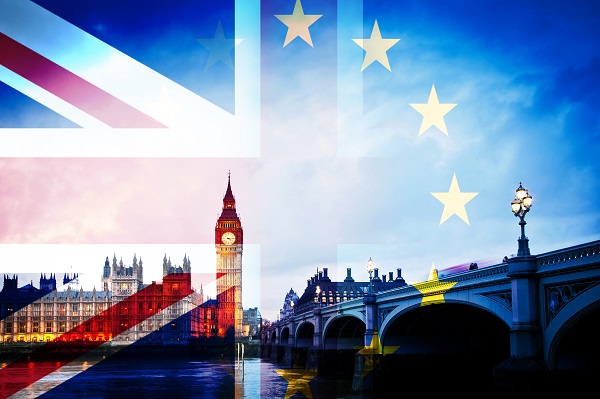
Brexit has been the biggest political and economic story of the decade for the UK – and for those businesses moving goods between the EU and Great Britain, the journey is far from over yet.
The Institute of Export & International Trade (IOE&IT) has conducted polls over recent weeks to take the temperature of companies doing business with the EU, as they look back on the first year of trading outside the EU customs union and single market.
Next up: rule changes for moving goods EU to GB
These same businesses are now having to embrace the next tranche of changes in GB’s trading relationship with the EU, which are coming on 1 January 2022 for goods moving from the EU into GB.
The year that was: survey findings
Overall, a picture emerges of British businesses having worked hard to get to grips with the changes, and largely succeeding, but lacking confidence and knowledge about what is still to come.
Finding 1: Confident traders
Asked ‘how confident are you with trading with the EU in a post-Brexit environment’, more than two thirds (70%) of respondents indicated they were confident trading with the EU (9.8% declaring themselves ‘very confident’ and 59.2% saying ‘quite confident’).
Finding 2: Training has helped
Just under two-thirds (64.4%) of businesses surveyed said they had undertaken additional training to adjust to the new post-Brexit trade rules and processes. Nearly three-quarters of respondents (74.7%) have made Brexit-related changes to their import and export arrangements.
Finding 3: Expertise still needed
Many businesses have had to call on external support or hire additional staff to deal with new trade rules and processes. Nearly half (47.1%) had sought external support in the shape of a customs consultant or a freight forwarder, while 21.1% had hired additional staff to deal with the new rules.
Finding 4: Nervous of import measures starting on 1 January 2022
However, when asked how confident they are of a trouble-free transition to new EU-to-GB import requirements coming into force on 1 January 2022, half of our respondents (50.3%) indicated a lack of confidence (‘not very confident’ = 34.1%; ‘not confident at all’ = 16.2%).
More than a third of respondents (40%) report some confidence in the process, with only 4.7% being ‘very confident’ while 36.2% were ‘quite confident’.
‘Period of adaptation'
Marco Forgione, director general of the IOE&IT said:
“The past year has been a period of adaptation for UK businesses engaging in trade with the EU. Confidence in exporting to the EU has grown over the past 12 months, as companies have undertaken more training and education.”
He continued:
“The IOE&IT has been supporting businesses through this year, delivering technical support, guidance and most importantly training, to ensure British exporters can trade both confidently and compliantly.”
Forgione pointed to the IOE&IT’s technical helpline experiencing a near four-fold (379%) increase of incoming enquiries from business members in the past 12 months.
Attendance at IOE&IT webinars saw an 80% increase, with over 20,000 delegates and 11,000 students undertaking additional learning and qualifications with the Institute.
However, Forgione recognised that the past year has been a stage in the transition to a post-Brexit trading relationship, with more work needing to be done to get importers up to speed.
He said: “As the Brexit timeline moves on, the next crucial date is 1 January 2022. The Institute stands ready to support importers implement these new changes and help them navigate them effectively.”
The shape of things to come
Aimee Maltman, deputy to the director of the IOE&IT’s Academy, summarises key trading changes being ushered in by the advent of the UK’s Border Operating Model from 1 January 2022
1. Customs declarations needed from 1 January 2022
From 1 January 2022, customs declarations and full import controls will apply to goods entering Great Britain from the EU and pay any relevant tariffs. Any goods passing across the border will need to have a customs declaration completed and accepted by HMRC systems.
In essence, this means that the optional easement given by the UK government allowing traders to delay declarations for up to 175 days is no longer available.
Goods movements will be risk assessed and goods may undergo physical and documentary checks at an inland border facility.
2. UK-EU trade deal: how to benefit
The EU-UK Trade and Cooperation Agreement (TCA) allows importers to benefit from zero tariffs (or customs duties) on goods.
Importantly, goods need to comply with the TCA’s rules of origin for this to apply, with the exporter of those goods needing to provide evidence that the goods originate in either the UK or EU.
3. SPS checks
Sanitary and phytosanitary (SPS) checks will be introduced on imports from the EU of agri-food products or products of plant origin in stages throughout 2022.
The IOE&IT has launched its Border Operating Model Suite (BOM) of six courses covering all these topics in-depth. See here for more information and a free download of the BOM timeline.
Join the IOE&IT and get up to 40% discount on these courses and consultancy to prepare for changes coming with the Border Operating Model from 1 January 2022.



